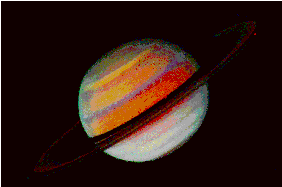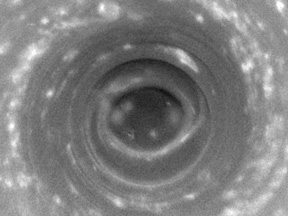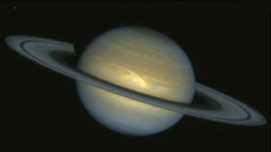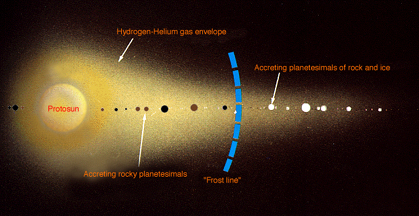This is an image of a storm on Saturn.
Click on image for full size
Reta Beebe (New Mexico State University), D. Gilmore, L. Bergeron (STScI), and NASA
An Overview of Motions in Saturn's Atmosphere
The most important motions in the atmosphere are
winds. The major winds in Saturn's atmosphere are the
zonal winds which are made of zones and belts. Zones and belts blow in opposite directions around the entire planet.
You might also be interested in:

Wind is moving air. Warm air rises, and cool air comes in to take its place. This movement creates the winds around the globe. Winds move at different speeds and have different names based on their speed.
...more
The clouds on Saturn, like Jupiter, are divided into stripes called "belts and zones". In a belt, very powerful winds blow one way. In a zone, very powerful winds blow the other way. These kinds of winds
...more
The clouds of Saturn are much less colorful than those of Jupiter. This is because Saturn's atmosphere is made of more sulfur. Sulfur makes Saturn look yellow. The atmosphere of Saturn, like Jupiter, is
...more
If you wanted to go someplace warm for a vacation, would you choose the South Pole? If you lived on Saturn you might! Saturn's South Pole is the warmest place on the ringed planet. Watch out for the weather,
...more
The most important motions in the atmosphere are winds. The major winds in Saturn's atmosphere are the zonal winds which are made of zones and belts. Zones and belts blow in opposite directions around
...more
The position of the planets in the solar nebula affected how big they became and what they were made of. The blue line in the picture shows where it became so cold that ice began to form. Planets that
...more
As shown in this picture, while they were forming in the solar nebula, the core of the planets-to-be drew material to themselves from the cloud of gas and dust around them. The bigger planets-to-be were
...more














